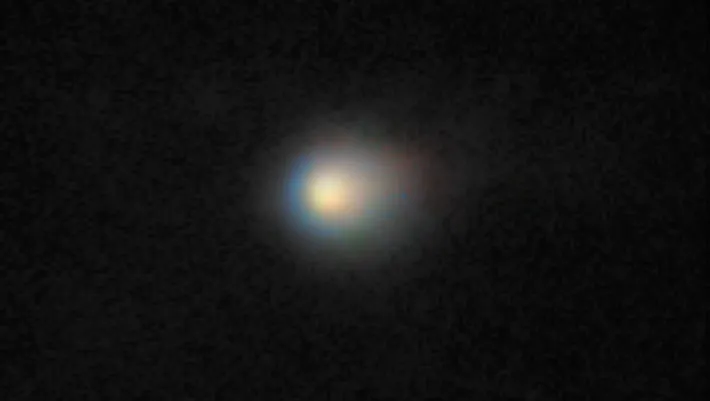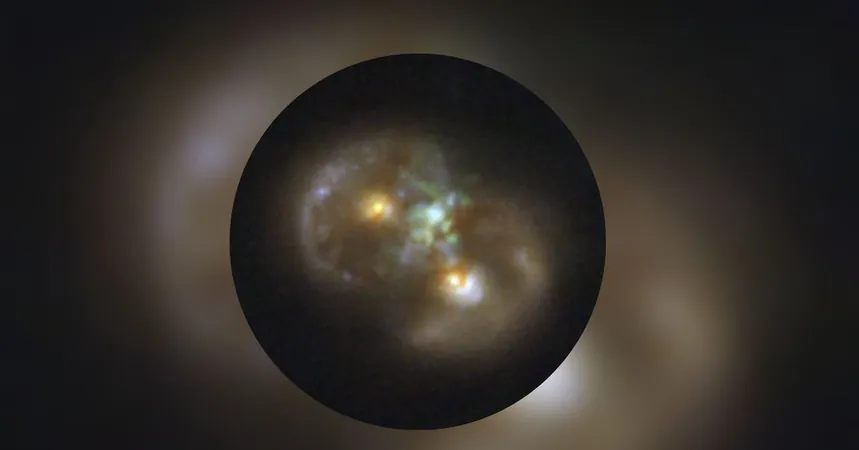
Incredible New Images of Interstellar Comet 3I/ATLAS Captured by Gemini North Telescope!
2025-07-16
Author: Amelia
A Cosmic Visitor: Meet 3I/ATLAS!
Astronomers using the Gemini North telescope at NSF’s International Gemini Observatory have made groundbreaking observations of an extraordinary interstellar comet named 3I/ATLAS. As it makes its fleeting journey through our Solar System, this cosmic wanderer provides a unique glimpse into the distant realms of space.
Why Interstellar Objects Matter
Interstellar objects are fascinating because they hail from beyond our Solar System. These celestial fragments, which can range from mere meters to several kilometers in size, are remnants from the formation of their parent stars’ planetary systems. They often get ejected from their original orbits due to the gravitational pull of nearby giants or other stellar bodies, ultimately venturing into the vastness of interstellar space.
A Treasure Trove of Information
Studying the likes of 3I/ATLAS offers invaluable insights into the building blocks of other solar systems. These visitors carry essential information about the chemical elements present during their formation, providing clues about how diverse planetary systems are born across the Milky Way, even extending to stars that no longer exist.
A Rare Discovery: Third of Its Kind!
3I/ATLAS stands out as only the third interstellar object identified, following the trailblazers 1I/‘Oumuamua in 2017 and 2I/Borisov in 2019. Although scientists suspect many more such objects slip through our solar neighborhood, capturing them is a challenge. They are only visible when they are close enough—a perfect alignment of chance and timing for our telescopes.
What Makes 3I/ATLAS Unique?
Early observations reveal that 3I/ATLAS is notably larger than its predecessors, boasting an approximate diameter of 20 km (12 miles). In comparison, ‘Oumuamua measured roughly 200 meters, and Borisov was less than 1 km.
In addition, 3I/ATLAS possesses an exceptionally eccentric orbit, quantified by its eccentricity of 6.2. This indicates a highly hyperbolic trajectory, highlighting its interstellar origin. For context, ‘Oumuamua had an eccentricity of about 1.2, and Borisov about 3.6.
Current Position and Future Encounters
Currently, 3I/ATLAS is situated within Jupiter’s orbit, approximately 465 million km (290 million miles) from Earth. It is expected to make its nearest approach on December 19, 2025, coming within 270 million km (170 million miles) of our planet—although it poses no threat whatsoever. It will skim the Sun’s vicinity around October 30, 2025, reaching a close distance of 210 million km (130 million miles), just within the orbit of Mars, while hurtling through space at nearly 25,000 km (15,500 miles) per hour!
Groundbreaking Observations!
The stunning new images of 3I/ATLAS were taken using the Multi-Object Spectrograph (GMOS-N) at the Gemini North telescope. Martin Still, NSF program director for the International Gemini Observatory, praised the sensitivity and agile scheduling of the observatory, stating, “We look forward to a bounty of new data and insights as this object warms itself in sunlight before it continues its cold, dark journey between the stars.”
Stay Tuned!
As scientists continue to study this enigmatic interstellar traveler, the potential for new discoveries about the cosmos is immense. Keep your eyes on the skies—who knows what other wonders await us?









 Brasil (PT)
Brasil (PT)
 Canada (EN)
Canada (EN)
 Chile (ES)
Chile (ES)
 Česko (CS)
Česko (CS)
 대한민국 (KO)
대한민국 (KO)
 España (ES)
España (ES)
 France (FR)
France (FR)
 Hong Kong (EN)
Hong Kong (EN)
 Italia (IT)
Italia (IT)
 日本 (JA)
日本 (JA)
 Magyarország (HU)
Magyarország (HU)
 Norge (NO)
Norge (NO)
 Polska (PL)
Polska (PL)
 Schweiz (DE)
Schweiz (DE)
 Singapore (EN)
Singapore (EN)
 Sverige (SV)
Sverige (SV)
 Suomi (FI)
Suomi (FI)
 Türkiye (TR)
Türkiye (TR)
 الإمارات العربية المتحدة (AR)
الإمارات العربية المتحدة (AR)